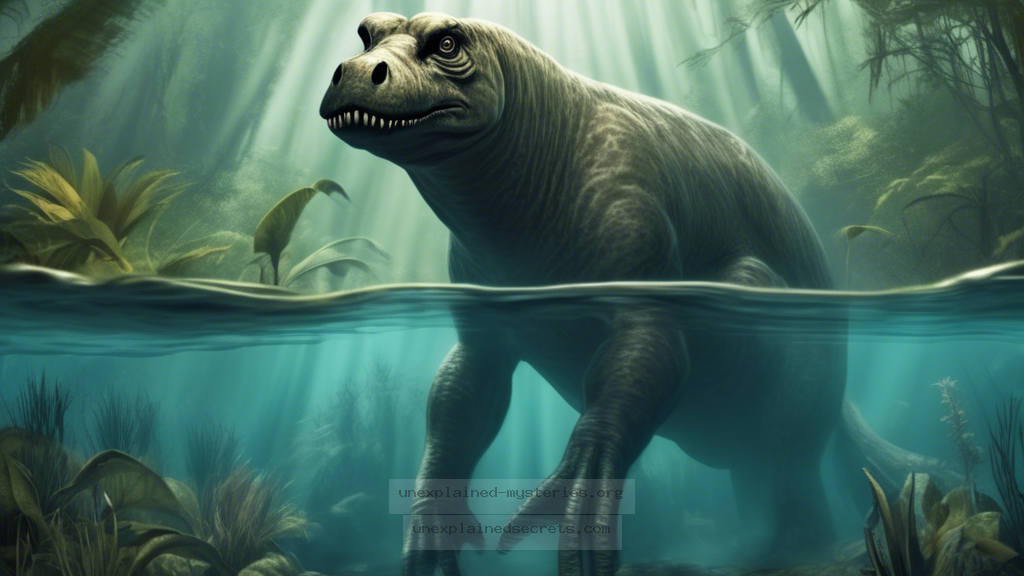What Really Happened to the Mokele-Mbembe: Is This African Cryptid More Than Just a Legend?
What Really Happened to the Mokele-Mbembe: Is This African Cryptid More Than Just a Legend?
The Mokele-Mbembe, often described as a living dinosaur resembling a sauropod, has intrigued cryptozoologists and enthusiasts for decades. This enigmatic creature is said to inhabit the Congo River Basin in Africa, where reports of sightings have fueled both curiosity and skepticism. But what truly lies behind the legend of the Mokele-Mbembe? This question is not just about a mythical beast; it speaks to the intersection of folklore, biology, and the unexplored vastness of our planet’s jungles. In this post, we will delve into the historical context, core theories, evidence, and ongoing research surrounding this captivating mystery.
Historical Context: The Origins of the Mokele-Mbembe Legend
The Mokele-Mbembe’s legend dates back to local folklore among the Bakongo and other tribes in the Congo region. Descriptions of the creature often depict it as a massive, herbivorous beast with a long neck and tail, resembling a dinosaur. The name “Mokele-Mbembe” translates to “one who stops the flow of rivers,” a reference to its supposed size and presence in the waterways of the Congo.
Explorers and naturalists of the 19th and 20th centuries, such as Pierre Savorgnan de Brazza and later, in the 1980s, Dr. Roy Mackal, began documenting these tales, which led to a surge of interest in the cryptid. Local tribes claimed to have encountered the creature, detailing its behavior and habitat. These accounts, while anecdotal, laid the groundwork for further investigations and expeditions into the jungles of Africa in search of the Mokele-Mbembe.
Core Concepts: What Is the Mokele-Mbembe?
The Mokele-Mbembe is often classified within the category of “living fossils,” creatures believed to be similar to species thought to be extinct for millions of years, such as dinosaurs. The idea that such a creature could still exist in the remote Congo Basin raises intriguing questions about biodiversity and the limits of human exploration.
Descriptions of the Mokele-Mbembe vary, but common characteristics include:
- Size: Estimates range from 10 to 40 feet in length.
- Physical Features: Long neck, large body, and a tail similar to that of a crocodile.
- Habitat: Freshwater rivers and swamps, with a diet primarily consisting of vegetation.
Practical Implications: Evidence and Sightings
Despite numerous expeditions to the Congo Basin, concrete evidence for the existence of the Mokele-Mbembe remains elusive. However, there have been many reported sightings over the years. For example, in 1981, a group of researchers led by Dr. Mackal claimed to have uncovered evidence of the creature’s existence, including footprints and a large nest-like structure in the swamp. Yet, these findings were never conclusively proven.
More recent sightings have been documented, including a notable report in 2005 from a local fisherman who described seeing a massive, dinosaur-like creature emerge from the water. Such accounts continue to captivate the imagination of cryptozoologists and enthusiasts alike.
| Year | Location | Details of Sighting |
|---|---|---|
| 1981 | Congo River | Dr. Roy Mackal’s expedition reported large footprints and a nest. |
| 2005 | Lake Tele | Fisherman claimed to see a large creature emerge from the water. |
| 2013 | Congo Basin | Researchers captured what appeared to be a large animal moving through the vegetation. |
Alternative Perspectives: Skepticism and Scientific Explanation
While many are drawn to the romantic idea of a surviving dinosaur, skepticism abounds. Scientists argue that the likelihood of such a creature existing in today’s world is extremely low due to the extensive exploration and study of the Congo region. They suggest that sightings of the Mokele-Mbembe may be attributed to misidentifications of known animals, such as hippos or crocodiles, especially given the psychological phenomenon known as pareidolia, where individuals see patterns or familiar shapes in random stimuli.
Furthermore, concerns over habitat destruction due to logging and mining operations may have led to a decline in the population of large wildlife in the region, making the existence of a creature like the Mokele-Mbembe even less plausible.
Common Misconceptions: Clarifying the Myth
Several misconceptions surround the Mokele-Mbembe, often perpetuated by sensationalized media and folklore. For example, many believe that the creature is a direct descendant of dinosaurs, which is scientifically inaccurate. The theory of evolution suggests that today’s reptiles and mammals evolved from common ancestors with dinosaurs, rather than being direct descendants.
Another misconception is the idea that the Mokele-Mbembe is solely a creature of myth, with no basis in reality. While it is essential to approach the subject with skepticism, the cultural significance of the Mokele-Mbembe in local folklore cannot be dismissed. It serves as a symbol of the unknown and the uncharted territories of our world.
Best Practices for Investigation: How to Research Cryptids Ethically
For those interested in investigating the Mokele-Mbembe or other cryptids, it is crucial to approach the subject with respect and scientific rigor. Here are some best practices:
- Research Thoroughly: Familiarize yourself with local folklore and scientific literature regarding the area you plan to explore.
- Engage with Local Communities: Building relationships with local tribes can provide insights and context that are often overlooked by outsiders.
- Document Findings: Keep meticulous records of any evidence or sightings, including photographs and detailed descriptions.
- Remain Skeptical: Question your findings and consider alternative explanations before drawing conclusions.
Future Developments: Ongoing Research and Potential Discoveries
Research into the Mokele-Mbembe is ongoing, with modern technology providing new methods for exploration. Advances in drone technology, remote sensing, and genetic testing could lead to significant breakthroughs in the search for this elusive creature. Moreover, the growing interest in the biodiversity of the Congo Basin highlights the need for continued conservation efforts, which could also lead to the discovery of new species.
In recent years, collaborative efforts between scientists and local communities have been promoted to ensure that exploration is conducted sustainably and ethically. This approach not only aids in the search for the Mokele-Mbembe but also contributes to the overall understanding of the region’s ecology.
Conclusion: The Enigma of the Mokele-Mbembe Persists
The mystery surrounding the Mokele-Mbembe continues to captivate the imagination of many. Whether the creature is a mere legend or a yet-to-be-discovered species remains an open question. As we explore the boundaries of our world, the legend of the Mokele-Mbembe serves as a reminder of the vastness of the unknown and the untamed wilderness that still exists within our planet.
In summary, while skepticism is necessary when exploring cryptozoological phenomena, the allure of the Mokele-Mbembe cannot be entirely dismissed. With ongoing research and ethical investigation practices, we may yet uncover new truths about this legendary creature and the rich biodiversity of the Congo Basin.
Other Articles
Recent Posts
- What Happened to Flight MH370? The Conspiracy Theories That Still Haunt Us
- What Secrets Lurk Within the Walls of the Infamous Trans-Allegheny Lunatic Asylum?
- What Evidence Supports the Existence of Bigfoot in the Pacific Northwest?
- What Happened to the Indus Valley Civilization? Unraveling the Mysteries of Ancient Urban Life
- Can Telepathy Be Scientifically Proven Through Laboratory Evidence?







